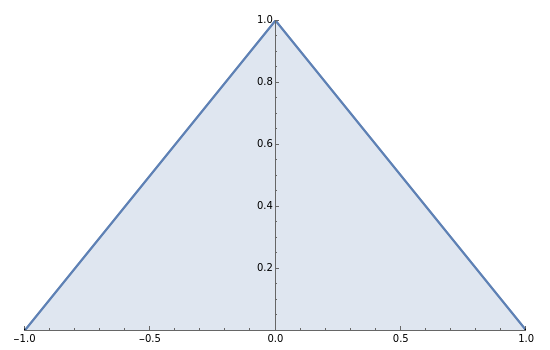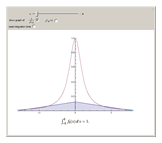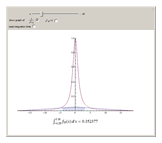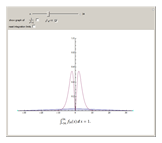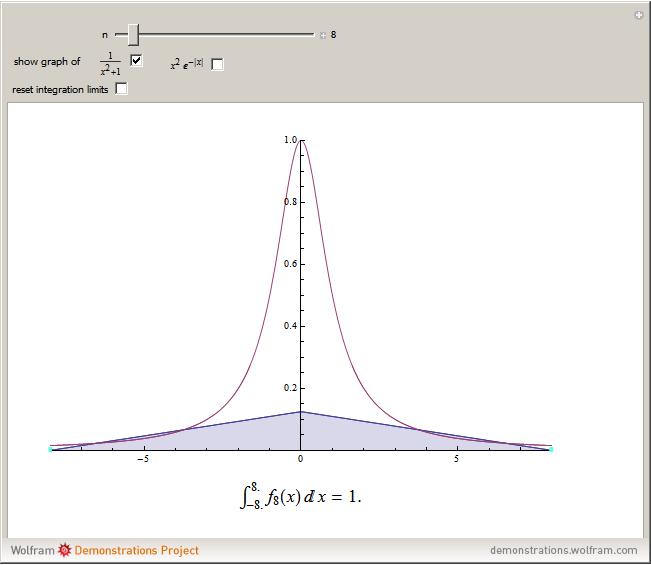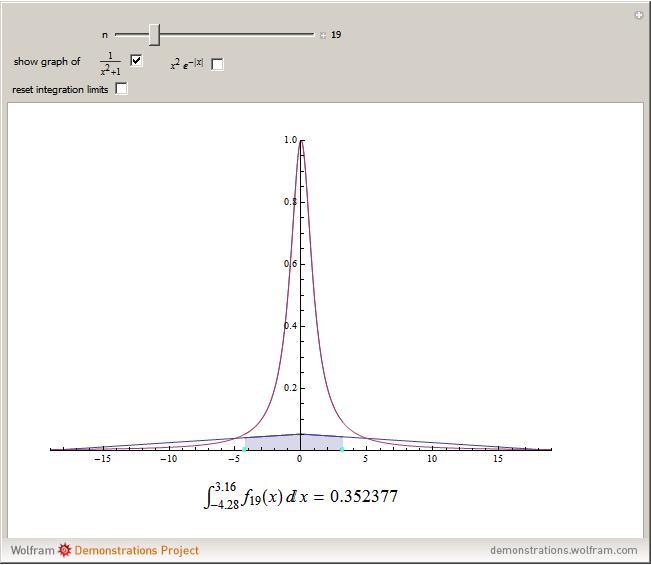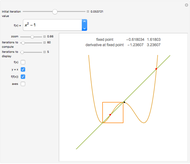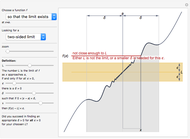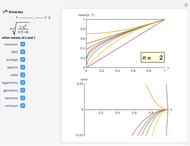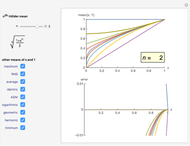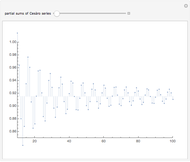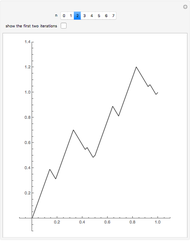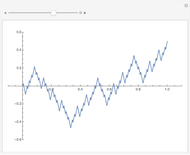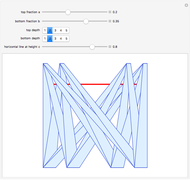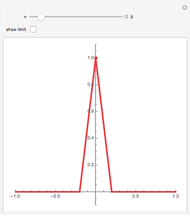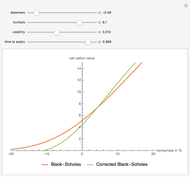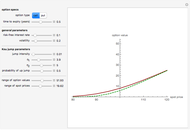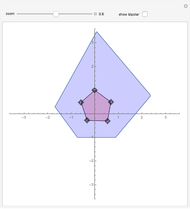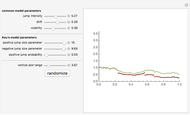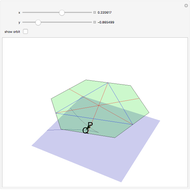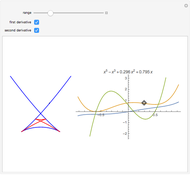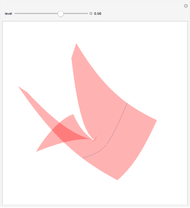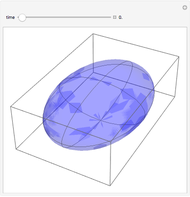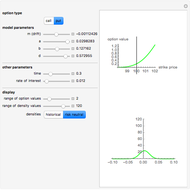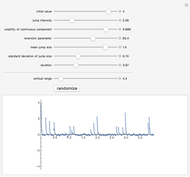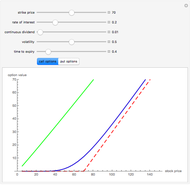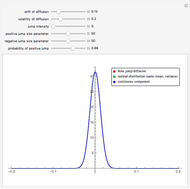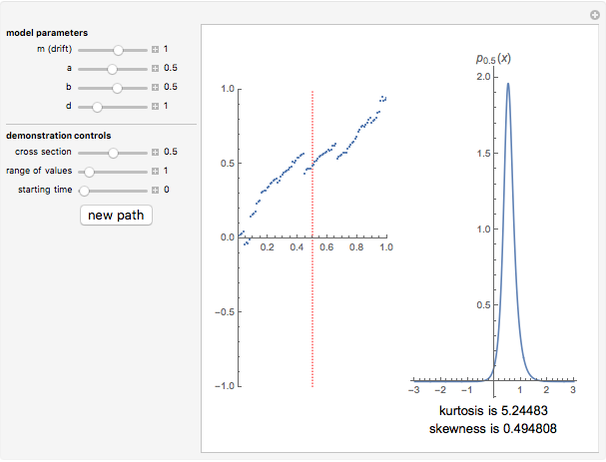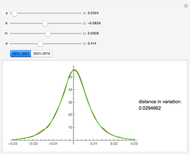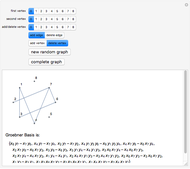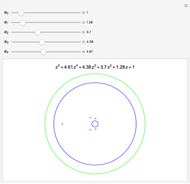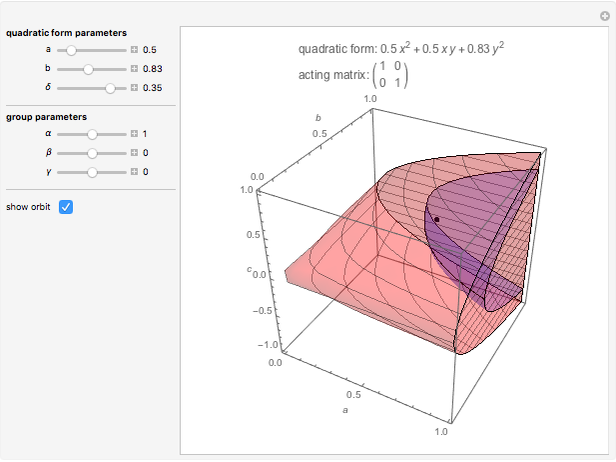Escape to Infinity

Requires a Wolfram Notebook System
Interact on desktop, mobile and cloud with the free Wolfram Player or other Wolfram Language products.
This Demonstration shows a family of continuous functions that converge uniformly to the zero function on the real line but whose integrals are all equal to 1. Thus, the limit of the integrals over the real line is not the integral of the limits. However, by fixing the endpoints (the movable bluish points on the real axis) and then increasing  , you see that the integrals over a fixed finite interval do tend to 0.
, you see that the integrals over a fixed finite interval do tend to 0.
Contributed by: Andrzej Kozlowski (March 2011)
Open content licensed under CC BY-NC-SA
Snapshots
Details
Let  be a sequence of continuous real functions on a closed interval
be a sequence of continuous real functions on a closed interval  . Suppose the sequence converges uniformly to a function
. Suppose the sequence converges uniformly to a function  . Then
. Then is continuous and
is continuous and  (Riemann integral). The Demonstration shows that this is not true if the interval
(Riemann integral). The Demonstration shows that this is not true if the interval  is replaced by the entire real line. The sequence of functions shown is given by
is replaced by the entire real line. The sequence of functions shown is given by

Then for all  ,
,  , although the sequence converges uniformly on
, although the sequence converges uniformly on  to the zero function. However, by choosing real numbers
to the zero function. However, by choosing real numbers  ,
,  with
with  (represented by the blue points on the
(represented by the blue points on the  axis) we see that
axis) we see that  as
as  . The phenomenon of nonconvergence to 0 of integrals of functions that converge uniformly to 0 on
. The phenomenon of nonconvergence to 0 of integrals of functions that converge uniformly to 0 on  is sometimes called "escape to infinity" (e.g. see [1]).
is sometimes called "escape to infinity" (e.g. see [1]).
The dominated convergence theorem (see [1]) states that if there exists a function  with
with  for all large enough values of
for all large enough values of  and
and  and such that
and such that  , then the above cannot happen, since in this case we always have
, then the above cannot happen, since in this case we always have  .
.
Reference
[1] T. W. Körner, A Companion to Analysis:A Second First and First Second Course in Analysis, Graduate Studies in Mathematics vol. 62, American Mathematical Society, 2004.
Permanent Citation
